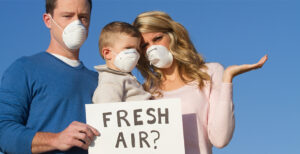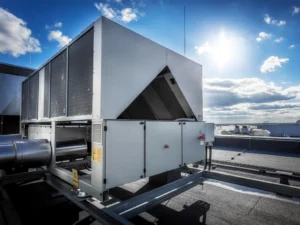Did we miss the 5th anniversary of the COVID-19 pandemic? Good. If COVID-19 were a person, it would be the sort of person from whom we’d never accept an anniversary invite. That being said, 5+ years of COVID-19 have taught us 5 important lessons:
1. Denying Uncertainty Destroys Trust
During a crisis, humans look to leadership and expertise to reassure and comfort them. However, expertise isn’t omniscience. For the first year of the pandemic, uncertainties were omitted or obscured in the belief that confidence was superior to rigor. When government guidance then fell short, lies and political polarization rushed to fill the void. This prevented large segments of the population from trusting the vital guidance that eventually did emerge.
One example of this was early statements from the surgeon general and others claiming that masks were “not effective” in preventing the spread of COVID-19. This guidance was partially motivated by the desire to preserve PPE for healthcare workers. However, when masks turned out to be highly effective (at least N95 and KN95 masks), it reduced the credibility of future advice.
Another example was a lack of clear communication around the dual nature of vaccines. Some vaccines — such as those for measles and polio — are all but guaranteed to prevent illness. Such comprehensive vaccines tend to be for viruses that mutate infrequently and/or spread less easily through the population. Others though — such as those for the flu and SARS-COV-2 — are better at preventing severe illness than infection. This latter type, called a “leaky” vaccine, is not a failure; it merely has a different goal. However, there was a misunderstanding among the public (and sincere yet naïve optimism among some healthcare professionals) that the COVID-19 vaccine would be more like the measles vaccine than the flu vaccine.
However, the greatest unadmitted misunderstanding was that…
2. “Droplets” are Lore, Not Science
Per Wired magazine, in 1934, scientific couple William Firth Wells and Mildred Weeks Wells performed an experiment analyzing how gravity acts on airborne particles. They discovered that under the right conditions, particles smaller than 100 microns can stay aloft in the air — traveling long distances. A few decades later, William Wells discovered that rabbits exposed to a fine mist (5 microns or less) of infectious particles got sick, while those exposed to a coarse mist of infectious particles did not.
In one of the greatest goofs in modern scientific history, Wells’s colleagues conflated their memories of these 2 experiments. Professionals began to incorrectly believe that infectious particles larger than 5 microns would drop to the ground after a short time (i.e., “droplets”). It thus became an incontrovertible doctrine that most respiratory viruses were conveyed only at close distances. With scant exception, the idea of large droplets traveling long distances via indoor air (and thus not truly being droplets at all, but rather aerosols) was seen as ridiculous.
Thus, when the pandemic arrived, both Washington and the WHO began to operate as if the virus was unlikely to spread further than 6 feet. COVID is indeed less likely to spread beyond this distance. However, there is an important practical distinction between “unlikely” and “less likely.” Not only COVID-19, but also flus and colds, can travel long distances via indoor air.
Eventually, the evidence for aerosols over droplets became overwhelming, and the guidance for COVID-19 was modified. However, this modification took nearly a year. Meanwhile, the 6-feet rule is still entrenched in flu guidance, despite study after study demonstrating that this is incorrect. We fear it will take another generation (and/or another pandemic) before most scientists move past their hyperfocus on sneezes and start looking at indoor air.
3. Remote Work Works
Not everything we learned during COVID was the result of tragic pride. The pandemic also broke down taboos around remote work from copywriting to healthcare. This resulted in several important benefits:
- Global Freelancing: Living halfway across the country from ActivePure’s headquarters, the main researcher of this article would not have been able to help with it before COVID. Thousands of remote workers have benefited similarly. Meanwhile, employers have benefited from greater productivity and employee retention.
- Homebound Boost: The normalization of remote work allowed certain homebound Americans (such as those with severe disabilities) to rejoin the workforce. It also allowed companies to find this previously untapped talent.
- Telehealth Help: Not every medical treatment requires seeing the doctor in person, especially mental health treatment. The normalization of telehealth allows millions of Americans to avoid taking half a day off from work for a doctor’s appointment. In a similar spirit, the widespread adoption of home testing continued long after the pandemic, with home tests now available for the flu.
4. Endemic COVID is Not Okay
As of this writing, people still die every day of COVID-19 — nearly 40 per day in the US alone. We’ve gotten used to it, but that is still 40 grandparents cut out of their grandchildren’s lives…every…single…day.
In addition to deaths, Long COVID is still an ongoing concern for millions. COVID researcher Dr. Ziyad Al-Aly expertly summarized the cost of Long COVID for Science News:
“[Long COVID] affects at least 400 million lives across the globe. We recently estimated the economic losses to be about $1 trillion per year. That’s about 1 percent of global productivity.
Long COVID can affect nearly every organ system. People think about it [as causing] brain [fog] and fatigue. Those can be symptoms of long COVID, but it’s much more than that. We have people with heart problems, kidney problems[,] and metabolic problems. In some individuals, long COVID can be mild and not disabling. But in others, it can be severely disabling, to the point of people being in bed and losing their jobs.
Unfortunately, we haven’t really cracked the code for treating long COVID. There are still no established treatments approved by the FDA.’’
5. The World Isn’t Ready for the Next Pandemic (But You Can Be)
When the fear of COVID was fresh, it appeared that indoor air purification would become the new normal of the 21st century, just as water purification was the new normal of the 20th century. However, governments, organizations, and individuals have moved on. Most people do not suffer fatigue from Long COVID, but rather fatigue from news about COVID. Precautions against infection have taken a back seat to the day planner and the bottom line.
Thus, those resilient organizations that know better must do what the government can’t right now — treat the air like a municipality treats drinking water. This means monitoring and purification on a building-by-building basis.
Fortunately, we now have the technology to do this affordably at an organizational (or even individual) level. Devices with ActivePure’s Advanced Photohydrolysis Technology neutralize up to 99.9% of common airborne pathogens (including the COVID-19 virus). Meanwhile, we source bespoke monitoring suites for our customers that measure 6 air quality factors in real-time. This allows each building to take control of its own protection, without waiting for another pandemic to remind us.
Still not convinced? Read our blog on how air purification benefits the bottom line.



